Polish on Duolingo
Last night, 8 minutes before the day officially ended, the little green owl praised me for my late night work, I finished an exercise without mistakes, I reached my daily goal on Duolingo and leveled up the Scholar achievement (learned 2000 new words in a single course, in that case being Chinese). So this morning, 9 am. I’m ready for more, starting the learning day with some Polish. You can tell I hadn’t been doing that for a while:

I usually prefer to decided what grammar or word categories I start with, but on Duolingo you need to complete the basic levels for all categories before being able to move on to the next lessons. So not all sentences are just as relevant for my trips to Poland.
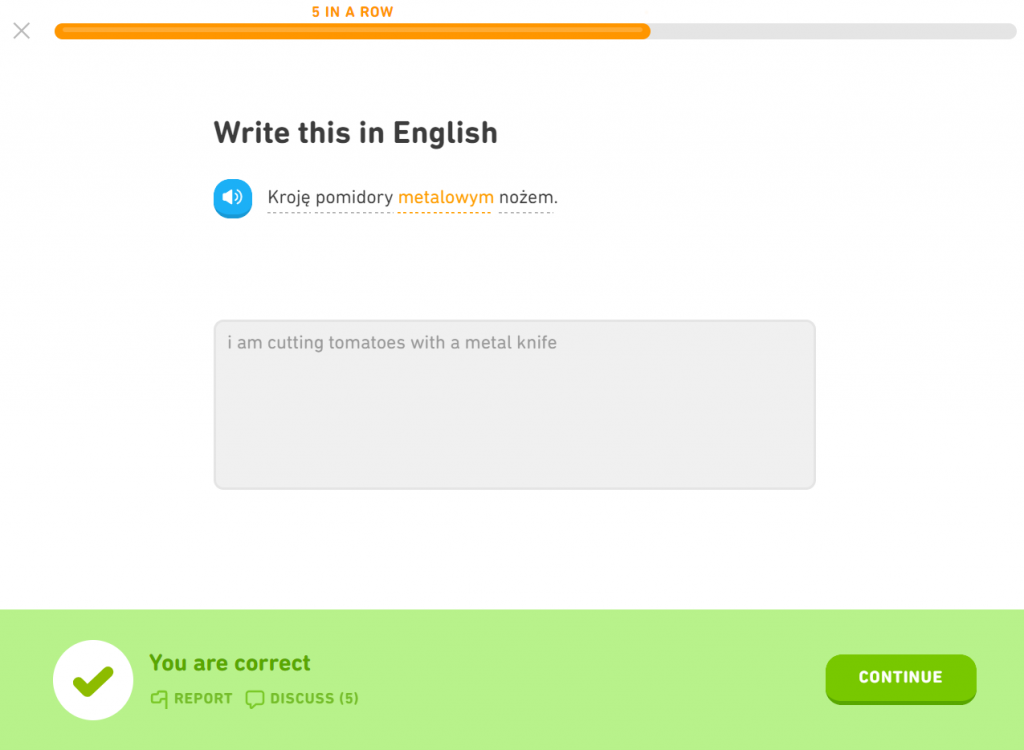
Continuing Chinese on Duolingo
Some sentences contain three new words and make me feel helpless that I’ll never master common characters and words. Then one later I feel pretty awesome again when I understand a sentence completely.

In Chinese characters: 那 是 我 们 的 西 班 牙 语 老 师。
Romanized to pniyin Nà shì wǒ men de xī bān yá yǔ lǎo shī.
Literal character meaning That (to be) I [plur] [poss] See-ban-ya (language) teacher.
Correct translation: That is [ our ] [ Spanish ] teacher.
This is what I love again about the Chinese (or any new) language. It’s so cool to see the structure!
With that necessary confidence I also try to approach another sentence with many new words for me:
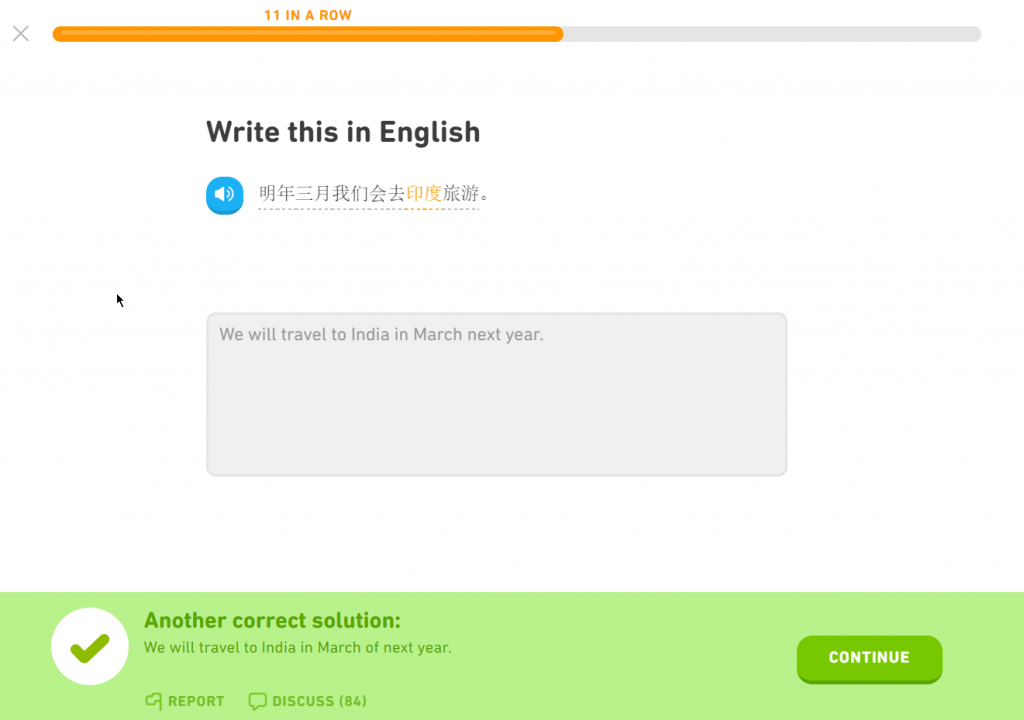
Although Duolingo just asks me to translate it, I try to write each character using the pinyin keyboard input.
In Chinese characters: 明 年 三 月 我 们 会 去 印 度 旅 游。
Romanized to pniyin Míng nián sān yuè wǒ men huì qù yìn dù lǚ yóu.
Literal character meaning New year 3 month I [plur] [fut] (go)to [phon Yindu] [ travel ].
Correct translation: Next year [ March ] [ we ] will travel to India.
Cool, right? BTW, to learn and recognize characters better on Duolingo, it can be helpful to zoom in for some exercises and zoom back out when you need to see the whole screen. When selecting the right semantic meaning from all phonetic options from the deck that the pinyin keyboard option provides, I’d like to do the same, but unfortunately those characters sty small, which makes it difficult for me as a beginner to recognize the one I need.
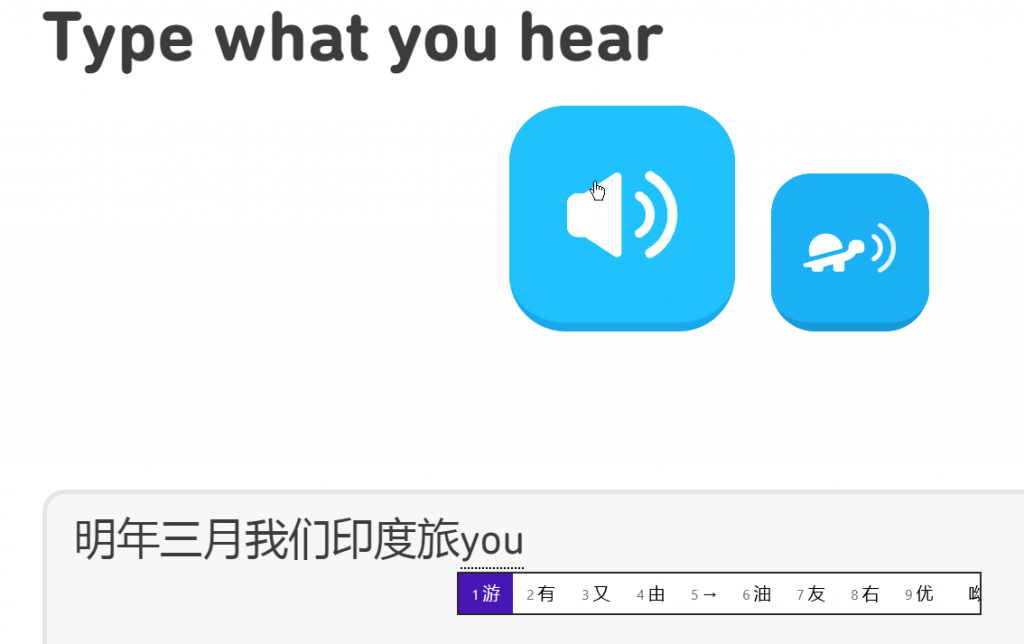
Do you want to write Chinese characters in Duolingo using your own keyboard?
Then read this post on how to write Chinese characters using a common keyboard QWERTY (US/many EUR) /AZERTY (French language) / QWERTZ (German speaking areas) to write Russian, Greek, Arabic, Hebrew, Hindi, Korean, Chinese, Japanese, Duolingo lessons – or really in any offline application or anywhere online.
Finishing that exercise got me to level 1 from that category Hobbies. That unlocked the checkpoint 3, which I passed. Although Duolingo is extremely good at giving you a satisfied feeling about it, I could have never passed it, if it wasn’t for the (deliberate?) mistake of not differentiating between a test and a normal exercise: hovering over any word in a given sentence still gave you the pronunciation and meaning. Also, given characters plus pronunciation weren’t extremely difficult to select the pinyin equivalent from the multiple (3) choice option. But hey, it’s not a state exam at Beijing Uni and it makes me feel good like I reached a next level of Chinese today and it makes me want to return to the course tomorrow. For now, I’ll move on with Swedish or something.
Swedish became Esperanto on Duolingo again
And yes, it keeps on telling you that you’re great. I start to realize the true reason why apps and users need one another. Something about time spent on the app versus having a good feeling. And great if you actually get the marketed benefit along the way.
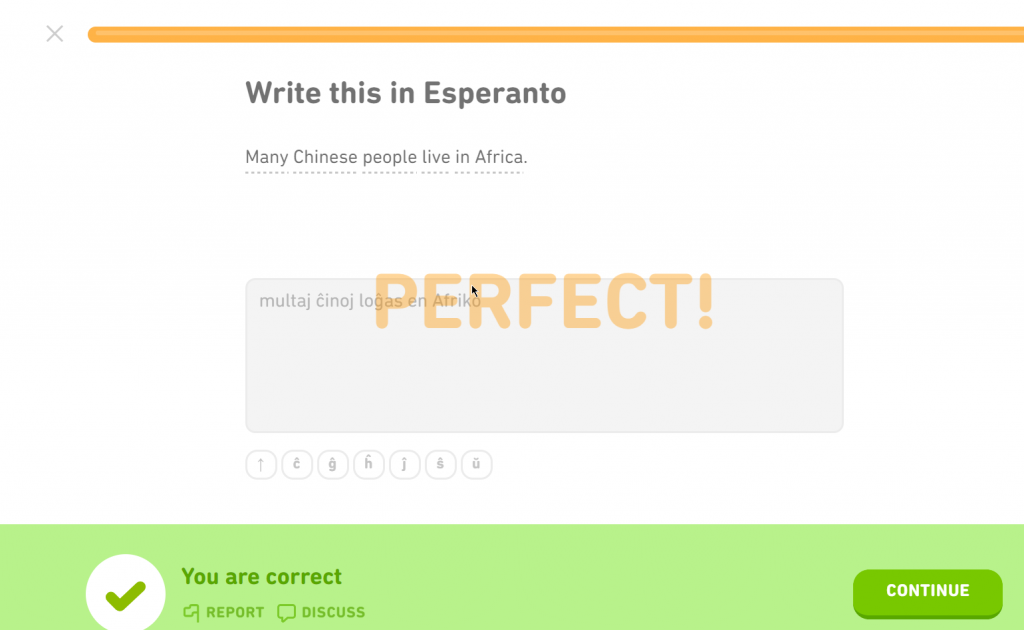
I was going to switch to Romanian, until I realized I might confuse that with my last language from a minute ago and end up speaking Esperanto in Romania or Romanian in Esperantoland. The latter is probably not that bad, as in my case the only people I know who speak Esperanto are multilinguals from the Polyglot Gathering 2020 who often speak 3-5 Romance languages anyway. Hearing them converse pretty fluent in this constructed language in various chat rooms that weekend inspired me to start learning this language in the first place.
If not this, then what?
If not Romanian, than what? Arabic of course! But dear lord (or Allah), what to do with these numbers in this first exercise? Besides, to answer below question correctly, it should have a fourth answer none, because the audio doesn’t play (except for the first word).
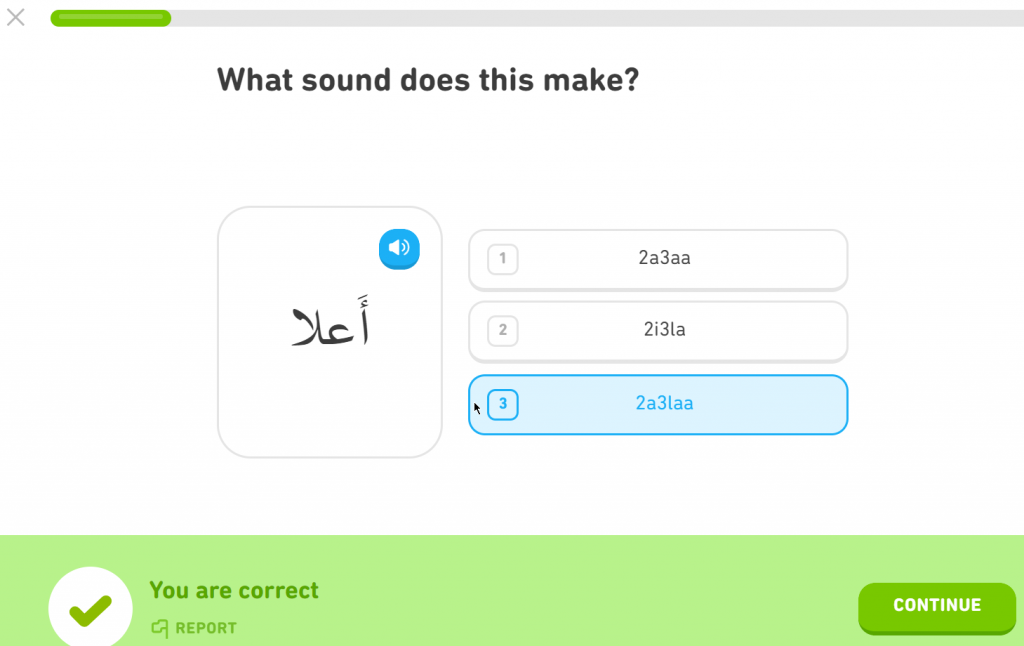
Rebut tut gut
a respected, intelligent German former colleague of mine. Or former respected, intelligent German colleague of mine? Ahh, I ♥ order and semantics.
I’ll always remember that advise from a co-worker back a technical service desk. I don’t know if rebooting Windows or just the Chrome browser enabled me to hear the audio from the Duolingo exercises, but it did the job. Now that the audio works, I only have trouble recognizing those Arabic letters that are romanized as 2 and 3. After some continued struggles in the Arab speaking deserts, which I deserted with a lovely dessert, I boarded my vessel and navigated towards the Eastern Aegean where I landed on some isles with another xenophonic tongue and came across the following writing, which actually is related to both Arabic and of course Latin letters.
Useful orations in Greek
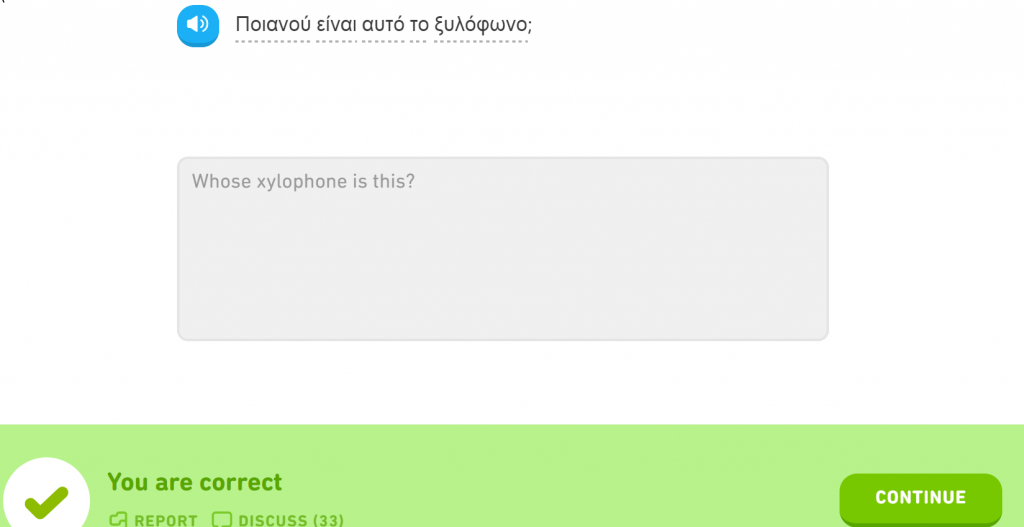
From linguistic struggles in the Middle-East and North Africa, I now struggle to see the relevance of above utterance. I find it hard to picture myself in Athens using this phrase, but hey, I recognize a Greek word from other European languages and that’s worth something. After the question about that musical instrument followed who’s bear that is. Yes, 🐻 not 🍻.